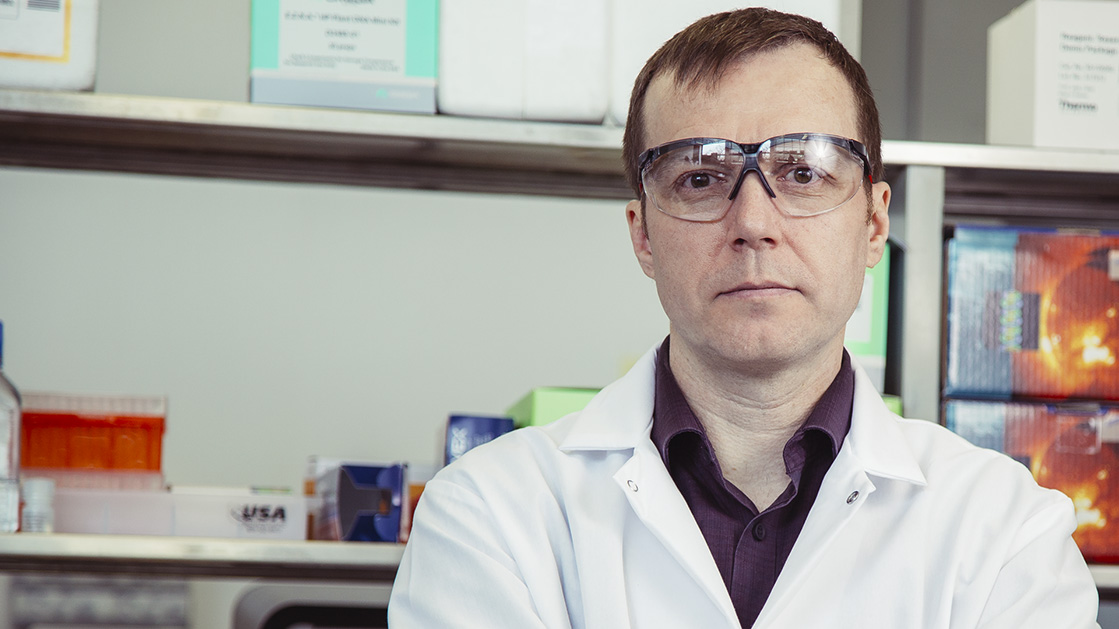
Inside the DNA of Pathogens
By Olivia Dimmer
Figuring out how diseases co-evolve alongside humans can be challenging, Illinois Tech Assistant Professor of Biology Jean-Francois Pombert says. By looking at the genomes of pathogens, components involved in virulence and in host adaptation can be identified.
“If we have a better understanding of what makes [pathogens] dangerous, we can start devising strategies to fight back or, even better, try to start developing prophylactic techniques to prevent diseases from occurring in the first place,” he says, noting that one of the challenges of DNA sequencing is that the process is almost like a big jigsaw puzzle, except there’s no picture on the box and the puzzle pieces often have the same colors, the same shapes, and are blurry.
For Pombert, the process of mapping out the genomes of human pathogens is the topic of his latest research. By using the fastest cutting-edge genome sequencers, Pombert and his team of student researchers have been able to accurately sequence the DNA of several bacterial pathogens that have never been sequenced before. In another project funded by a National Institutes of Health grant, Pombert hopes to find out more about how Microsporidia, a kind of parasite often found in patients with immune system deficiencies, infect us and how they avoid the defenses in place in the human body.
One of the sequencers his team uses is still in its prototype phase. The MinION Oxford Nanopore DNA and RNA sequencer can generate several gigabytes of DNA sequence data. Researchers can choose to sequence the entire genome of a substance or get a snapshot of a particular section. In addition, the MinION streams data in real time, enabling novel applications and faster responses to outbreaks.